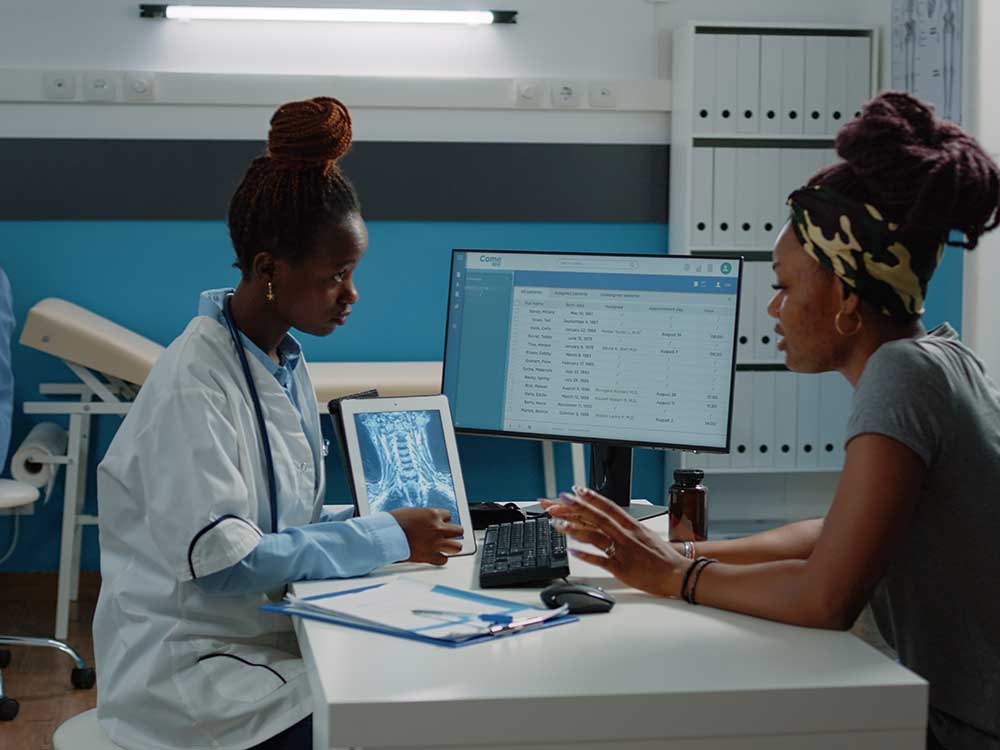Why Medical Administration is Necessary for Smooth Health Care Workflow
Why Medical Administration is Necessary for Smooth Health Care Workflow
Blog Article
Best Practices in Medical Administration for Improving Performance and Lowering Prices
In the ever-evolving landscape of healthcare, the pursuit of finest methods in medical management is extremely important for enhancing performance and suppressing expenses. By integrating sophisticated technologies such as digital health and wellness records and telemedicine, doctor can improve procedures and improve person treatment. Innovation alone is not a panacea; enhancing resource allowance and fostering collective interaction among treatment teams are just as important. As organizations aim to balance top quality and cost, what strategies should be prioritized to accomplish these twin goals? The answers to these inquiries hold the key to a more lasting healthcare system.
Leveraging Advanced Technology
In today's quickly evolving healthcare landscape, leveraging sophisticated modern technology is no more optional however crucial for efficient medical administration. The assimilation of electronic solutions into health care systems has actually transformed the method centers run, simplifying procedures and enhancing client treatment. Electronic Wellness Records (EHRs) are pivotal, giving thorough person data that can be accessed instantaneously by authorized workers, hence lowering redundancy and lessening errors. By systematizing client details, EHRs eliminate the requirement for cumbersome paperwork and assist in smooth communication among doctor.
Telemedicine is one more technological innovation that has revolutionized person communication. It offers ease for both individuals and healthcare specialists by allowing remote consultations, which can minimize the need for in-person brows through and enhance consultation scheduling. In addition, telehealth platforms can extend medical care accessibility to rural or underserved locations, bridging voids in care delivery.
In addition, using Artificial Intelligence (AI) and machine discovering is becoming progressively prevalent in anticipating analytics, permitting early discovery of potential wellness issues and even more educated decision-making. These technologies, when incorporated efficiently, can boost analysis precision and personalize person treatment plans, inevitably leading to boosted health care end results and operational efficiency.
Optimizing Source Allotment
Reliable resource allowance is important for making the most of the efficiency of clinical administration. By purposefully managing resources such as employees, equipment, and financial resources, medical care facilities can dramatically improve their operational performance, enhance person outcomes, and decrease unneeded expenditures. The primary step in optimizing resource appropriation involves conducting an extensive assessment of present properties and recognizing locations where resources may be underutilized or overextended. This evaluation ought to be data-driven, using metrics and analytics to educate decision-making procedures.
Prioritizing source allowance based on client demands and service needs is vital. Implementing adaptable staffing models can additionally enhance labor sources by changing personnel appropriation in action to varying client quantities.
Funds need to be carefully kept track of and assigned with calculated foresight to sustain both temporary operational demands and long-term institutional objectives. This consists of investing in training programs that enhance team proficiencies and adopting energy-efficient methods that reduce operational costs (medical administration). Eventually, an optimized source allowance approach promotes a sustainable healthcare setting that is responsive, effective, and economically sensible
Streamlining Workflow Procedures
When medical care facilities goal to improve functional performance, simplifying process procedures becomes a crucial focus. Efficient process lessen redundancy, remove unneeded steps, and improve control amongst health care experts. This technique not only speeds up service delivery but likewise improves the high quality of client treatment.

Next, modern technology combination plays a substantial role in enhancing workflows. Carrying out electronic health and wellness documents (EHRs) and digital physician order access (CPOE) systems decreases documentation, lessens human error, and makes certain information comes to all pertinent personnel. Furthermore, leveraging telemedicine systems can streamline patient examinations and follow-ups, reducing the pressure on physical facilities.

Eventually, structured workflows cause set you back decreases and boosted person complete satisfaction, promoting a much more lasting medical care setting.
Enhancing Data Management
Structure upon structured operations, optimizing data management becomes a crucial part ahead of time health care administration. Efficient data monitoring systems are crucial for maintaining exact person documents, enhancing decision-making, and guaranteeing compliance with governing requirements. By executing robust information administration services, healthcare facilities can boost the high quality of client care while simultaneously reducing functional expenses.
One secret element of improving data monitoring is the integration of sophisticated digital health and wellness record (EHR) systems. These systems promote the seamless exchange of person info throughout different departments, lowering duplication of examinations and reducing mistakes. A well-designed EHR system supports data analytics, making it possible for healthcare service providers to recognize trends and make notified choices regarding person care.
In More hints addition, protecting person data is vital. Adopting extensive cybersecurity actions, including file encryption and normal audits, guarantees the stability and discretion of sensitive details. This not just safeguards individuals but also preserves the establishment's credibility.
Purchasing staff training is one more critical aspect. Enlightening healthcare professionals on data administration practices enhances their capability to properly utilize technology, causing boosted patient outcomes. In final thought, boosting data administration with sophisticated modern technology and thorough training is important for accomplishing effectiveness and price reduction in clinical administration.
Fostering Collaborative Communication
An important component beforehand medical management is cultivating joint interaction amongst healthcare experts. Efficient interaction is extremely important for ensuring smooth person care, optimizing treatment outcomes, and reducing errors. By urging open discussion and control across multidisciplinary teams, healthcare organizations can improve their functional effectiveness and minimize unneeded expenses.
Central to this technique is the combination of interaction modern technologies such as digital wellness documents (EHRs) and safe messaging systems, which help with the fast exchange of vital person details. These devices make it possible for healthcare suppliers to accessibility and share information in real time, making sure that all staff member are educated and straightened in their decision-making procedures. Normal group conferences and interdisciplinary rounds can additionally promote a culture of collaboration and accountability.
Training programs focused on improving interaction abilities are also vital. Eventually, cultivating joint interaction leads to boosted healthcare delivery and expense savings.

Final Thought
Including advanced technology, such as electronic health records and telemedicine, together with enhanced source allowance and structured operations processes, is crucial for here boosting efficiency in medical administration. Reliable information monitoring and fostering collective interaction amongst healthcare groups are crucial for reducing redundancies and enhancing care top quality. By focusing on preventative treatment and participating in high quality improvement initiatives, health care companies can attain significant expense Website financial savings and boosted patient outcomes, thus guaranteeing lasting healthcare delivery in an increasingly complex setting.
Report this page